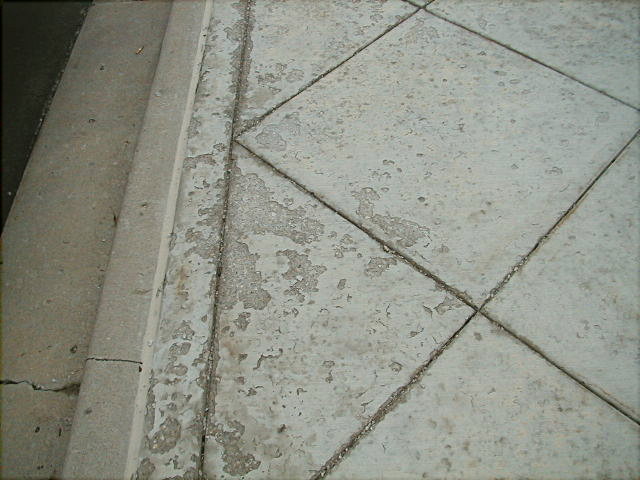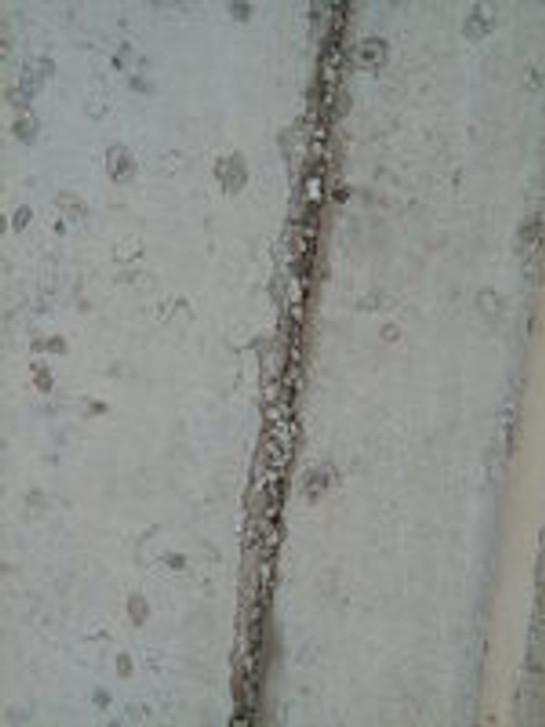 Concrete Surface Peeling
Concrete Surface Peeling
Problem: If a thin layer of the surface of the concrete slab is peeling, it can be a result of two common installation errors.
1) When the concrete sets faster than the finisher can complete his job additional water is added to the surface to extend the working time. Adding water weakens the surface of the concrete and diminishes its strength and durability. This damage it is usually not noticeable until the first freeze/thaw of the year.
Damage will show up when the concrete is exposed to ice or snow which then melts and penetrates into the concrete and freezes. Frozen water expands about 10%, pushing the thin, weak top layer upwards causing the layer to peel off (known as spalling).
2) A second reason for peeling is when the surface of the concrete dries faster during installation than the layer below it. This prevents the concrete from curing completely and creates a weak surface. The surface then peels when it is exposed to high use, stress or freeze-thaw. A very harsh winter and a higher frequency of freeze/thaw cycles will accelerate the peeling problem. Some areas (Kansas for example) can get as many as 99 freeze-thaw episodes in one winter.
It may take a few years for these problems to be a problem. Every freeze-thaw cycle breaks down cell walls creating more internal weakness that will show up on the surface at some point.
Solution: It is always best to seal any new concrete slab as soon as possible to prevent water penetration and potential deterioration. We recommend the use of a penetrating sealer which will significantly reduce the potential for peeling on new concrete and slow down the damage on older concrete. There is no product that can prevent a week surface from peeling eventually. No reputable sealer manufacturer will guarantee that their product will prevent or completely stop the peeling problem. Penetrating sealers do not change the surface of the concrete and will not hide the appearance of spalling. Spalling is usually not a structural issue but does distract from the appearance of the concrete slab.

